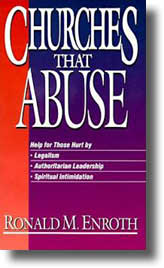Kerby Anderson provides an update on recent archaeological finds that corroborate the historicity of the Bible.
One of the most important proofs for the historical accuracy of the Bible can be found in archaeology. Ancient history and archaeology should confirm the accuracy of this record. That is what we find when comparing these finds with the written record of Scripture.
 My focus will be to summarize a few of the past archaeological finds that confirm the Bible and then provide an update on some of the newest archaeological discoveries made in just the last few years that are very significant. On the Probe website, we have an excellent summary done twenty years ago of archaeology and the Old Testament (probe.org/archaeology-and-the-old-testament/) and archaeology and the New Testament (probe.org/archaeology-and-the-new-testament/).
My focus will be to summarize a few of the past archaeological finds that confirm the Bible and then provide an update on some of the newest archaeological discoveries made in just the last few years that are very significant. On the Probe website, we have an excellent summary done twenty years ago of archaeology and the Old Testament (probe.org/archaeology-and-the-old-testament/) and archaeology and the New Testament (probe.org/archaeology-and-the-new-testament/).
Archaeology not only has confirmed the historical record found in the Bible, but it also provides additional details not found in the original writings of the biblical authors. Archaeology also helps explain Bible passages by providing context of the surrounding culture as well as the social and political circumstances.
We must also admit the limitations of archaeology. Although these archaeological finds can establish the historical accuracy of the record, they cannot prove the divine inspiration of the Bible. Also, we must admit that even when we have an archaeological find, it still must be interpreted. Those interpretations are obviously affected by the worldview perspective and even bias of the historians and archaeologists.
Even granting the skeptical bias that can be found in this field, it is still amazing that many archaeologists acknowledge the biblical confirmation that has come from significant archaeological finds.
Dr. William Albright observed, “There can be no doubt that archaeology has confirmed the substantial historicity of Old Testament tradition.”{1}
Archaeologist Nelson Glueck and president of Hebrew Union College concluded, “It may be stated categorically that no archaeological discovery has ever controverted a Biblical reference. Scores of archaeological findings have been made which confirm in clear outline or exact detail historical statements in the Bible. And, by the same token, proper evaluation of Biblical description has often led to amazing discoveries.”{2}
Millar Burrows, Professor of Archaeology at Yale University, remarked that “On the whole, however, archaeological work has unquestionably strengthened confidence in the reliability of the Scriptural record. More than one archaeologist has found his respect for the Bible increased by the experience of excavation in Palestine.”{3}
Old Testament Archaeology
There are so many significant archaeological finds that confirm the historical accuracy of the Old Testament. Perhaps the most famous and most significant find is the Dead Sea scrolls. A young shepherd boy found the first of them in a cave in 1947. Eventually over 800 fragments were found. This includes a complete scroll of the book of Isaiah.
Many of these scrolls are from before the time of Jesus Christ. That is important because it provided a way to check the accuracy of the transmission of the Old Testament. The earliest copies of the Old Testament that we had before this discovery were a thousand years later. When we compare the Dead Sea scrolls to these later manuscripts, we can see that there were very few variations (mostly due to changes in spelling or grammar). The transmission through the scribe was very accurate.
Another significant find was archaeological documentation of King David. Archaeologists working at one site uncovered an inscription that means “house of David” that dates to the ninth century BC.
Another important archaeological find was the Hittite nation. The Hittites are mentioned nearly 50 times in the Old Testament, but there was no solid archaeological evidence they existed until the 20th century. Some argued that the Bible must be wrong since it mentions this nation but archaeological evidence was lacking.
The Hittites were a major force against the Jews. Israel needed to conquer them in order to enter the Promised Land (Joshua 11:3-4). King David had Uriah the Hittite killed because of his adultery with his wife, Bathsheba (2 Kings 11:3-21). Fortunately, archaeologists did uncover abundant evidence of the Hittites in Turkey. They found a temple, sculptures, a storeroom with 10,000 clay tablets. Later they even uncovered the Hittite capital city of Hattusha.
Archaeologists with the Israel Antiquities Authority digging at Tel Lachish found an ancient toilet that confirms Old Testament history. To understand its significance, we need to look at the record of King Hezekiah. We read in 2 Kings that he removed the Asherah poles from the high places and smashed the sacred stones that were used in the Canaanite cultic worship.
Archaeologists discovered large rooms that appear to be a shrine where four-horned altars were destroyed. They also found a seat carved in stone with the hole in it that was used as a toilet. It was mostly likely placed there as a form of desecration for the whole room.{4} This correlates with the biblical description in 2 Kings 10:27 that Jehu and his followers “demolished the pillar of Baal, and demolished the house of Baal, and made it a latrine to this day.”
New Testament Archaeology
Jesus spent much of his time in Capernaum by the Sea of Galilee. It is mentioned 16 times in the New Testament. Archaeologists have uncovered evidence of the fishing industry there (anchors, fishhooks), which would have been used by many of the disciples. The houses were one-story buildings, with roofs of wooden beams or branches. This explains how men carried a man to the roof and let him down in front of Jesus (Mark 2:1-4). Jesus taught in the synagogue in Capernaum (Mark 1:21-22, Luke 4:31-36). The remains of a synagogue built in the 4th century sits atop the black basalt foundations of this synagogue that existed at the time of Jesus.
In Jerusalem are many archaeological discoveries from the time of Jesus. That includes the remains of the temple as well as the pool of Bethesda (John 5:1-15) and the pool of Siloam (John 9:1-7).
Archaeology (as well as history) verifies the existence of many political leaders mentioned in the New Testament. A Denarius coin shows a portrait of Tiberius Caesar. This is also significant because Jesus asked the people whose likeness was on the coin (Mark 12:17). The name Pontius Pilate was found in an inscription at Caesarea Maritima.
Sometimes archaeology can shed light on what seems like a sharp disagreement in the Bible. In Paul’s letter to the Galatians, he recounts what he said to Peter who stopped eating meals with gentile Christians. He argued that Peter lived like a Gentile even though he was a Jew.
The answer lies in the fact that Paul was a devout Pharisee, who took kosher food laws and purity very seriously. Peter, though Jewish, was not a Pharisee and grew up in Bethsaida on the north shore of the Sea of Galilee. Archaeological excavations uncovered some non-kosher evidence. Some were eating wild boar and catfish, which were considered unclean and not to be eaten by Jew following the Torah.{5}
Archaeological finds at Corinth include the city’s bema seat, where Paul stood trial (Acts 18:12-17) and an inscription with the name Erastus, a city administrator who was an associate of Paul (Acts 19:22; 2 Timothy 4:20; Romans 16:23).
Critics have challenged the historical record of Luke because of alleged inaccuracies. Classical scholar Colin Hemer documents that Luke is a very accurate historian.{6} He identifies 84 facts in the Book of Acts that have been confirmed by historical and archaeological research. This includes nautical details, names of gods, designation of magistrates, and proper names and titles.
These are just a few of the archaeological discoveries in the past that have confirmed the Old Testament and the New Testament. In the next section we will look at some of the most recent archaeological discoveries.
Recent Archaeological Discoveries
Within the last few years, there have been major archaeological discoveries that further confirm biblical history. An article in Christianity Today provides a list of the top ten archaeological discoveries.{7} Here are just a few of these important discoveries.
The Israel Antiquities Authority announced the discovery of a limestone column on which the world “Jerusalem” was spelled out in Aramaic. This is the oldest inscription of this nature found so far. You might expect that there would be lots of such inscriptions, but that turn out to be very rare.
The inscription was found in an ancient potter’s village that must have served pilgrims making their way to the Temple in Jerusalem. A potter’s field calls to mind the one bought by the priests (Matthew 27:7) with the money Judas returned.
The Jewish tabernacle and the Ark of the Covenant were located for a time in Shiloh. Excavation there produced a clay pomegranate. In the Bible, the pomegranate was a common temple decoration (1 Kings 7:18; 2 Kings 25:17). Small pomegranates embroidered with blue, purple, and scarlet yarns hung from the hems of the priestly robes (Exodus 28:33). This discovery affirms the sacredness of Shiloh.
Scientists and archaeologists believe they made have found the site of the destruction of Sodom and Gomorrah. They found evidence that a “high-heat” explosive event north of the Dead Sea wiped out all civilization in the affected area. It killed all the people within a 25-kilometer circular area. The fertile soil would have been stripped of nutrients by the high heat. Waves of briny salt would have washed over the surrounding area and spread through hot winds.
The scientists suggest that a cosmic airburst event from a meteor was the reason for the disappearance from the site. It apparently took 600 years for the region to recover before it could once again be inhabited. This fits with the description in Genesis 19, which says that burning sulfur rained down on Sodom and Gomorrah and killed all the people and all the vegetation of the land.
Archaeologist Dr. Stephen Collins says that there was a violent conflagration that ended occupation at the site. There is “melted pottery, scorched foundation stones, and several feet of ash and destruction debris churned into a dark gray matrix as if in a Cuisinart.” He and another author in a joint paper conclude that all of this provides “signs of a highly destructive and thermal event that one might expect from what is described in Genesis 19.”{8}
Recent Archaeological Discoveries
Above we looked at a few of the most recent archaeological discoveries that confirm the historical accuracy of the Bible. Most of them were found in an article in Christianity Today. Here are a few more significant discoveries.
An inscribed piece of limestone discovered in a tomb along the west bank of the Nile was revealed to be a Semitic abecedary (alphabet in ABC order). It dates back to the time of Moses and fits with the statement that “Moses wrote down everything the Lord had said” (Exodus 24:4). It turns out he wasn’t the only one writing in a Semitic script in Egypt at that time.
When ISIS terrorists captured Mosul, they blew up the tomb of the prophet Jonah. This uncovered the remains of a palace of the Assyrian King Esarhaddon. Previous archaeological teams stopped digging in certain sites in Iraq for fear of destroying them. That was a case of the traditional tomb of Jonah, until ISIS started digging beneath it to find artifacts to sell. As one article put it, “ISIS Accidentally Corroborates the Bible.”{9} The tunnels they dug revealed a previously untouched Assyrian palace in the ancient city of Ninevah. Inscriptions found in the old city of Nineveh give an order of Assyrian kings that matches perfectly with the biblical order.
Extra careful processing of dirt from an archaeological dig in the southwest corner of the Temple Mount provided a beka weight. This was used (Exodus 38:6) to measure the silver in the half-shekel temple tax that was collected from each member of the Jewish community.
Another seal impression seems to be (a letter is missing) the name “Isaiah the prophet.” It was found near the Temple Mount near another seal impression that says “King Hezekiah of Judah” that was uncovered two years earlier. Hezekiah and the prophet Isaiah are mentioned in the same verse 17 times. This clay seal gives the impression that Isaiah had access to the king’s palace as his adviser.
A ring with the name “Pontius Pilate” on it was excavated decades ago but only could be read recently due to advanced photographic techniques. Of course, this is not the first time that his name has surfaced in archaeology, but it is still a significant find. The ring is not fancy enough to have been worn by Pilate. It was probably worn by someone authorized to act on his authority and would use it to seal official communications.
This is an exciting time for archaeological investigation. New finds provide even more evidence of the historical accuracy of the Old Testament and the New Testament. Archaeology has provided abundant confirmation of the Bible.
Notes
1. William F. Albright, Archaeology and the Religions of Israel (Baltimore: Johns Hopkins University Press, 1956), 176.
2. Nelson Glueck, Rivers in the Desert (New York: Farrar, Strous and Cudahy, 1959), 136.
3. Millar Burrows, What Mean These Stones? (New York: Meridian Books, 1956), 1.
4. Richard Gray, “The wrong kind throne: Toilet discovered 2-800-year-old shrine,” Daily Mail, 28 September 2016.
5. Craig A. Evans, “Why Archaeology Matters for Bible Study,” Bible Study Magazine, March/April 2019, 18-19.
6. Colin J. Hemer, The Book of Acts in the Setting of Hellenistic History (University Park, PA: Eisenbrauns, 1990).
7. Gordon Govier, “Biblical Archaeology’s Top 10 Discoveries of 2018, Christianity Today, December 27, 2018.
8. Amanda Borschel-Dan, “Evidence of Sodom? Meteor blast cause of biblical destruction, say scientists,” Times of Israel, 22 November 2018.
9. “ISIS Accidentally Corroborates the Bible,” Facts and Trends, March 19, 2018.
©2020 Probe Ministries
 When I taught that day, I held up an acorn from our front yard.
When I taught that day, I held up an acorn from our front yard. In his book Churches That Abuse, Dr. Ronald Enroth carefully examines several of these churches throughout the United States. He reveals the cultic methods these groups use and points out several distinguishing marks of abusive churches. At this point I will briefly introduce each of these characteristics and some of my own. Later, I’ll discuss all these characteristics in detail.
In his book Churches That Abuse, Dr. Ronald Enroth carefully examines several of these churches throughout the United States. He reveals the cultic methods these groups use and points out several distinguishing marks of abusive churches. At this point I will briefly introduce each of these characteristics and some of my own. Later, I’ll discuss all these characteristics in detail.